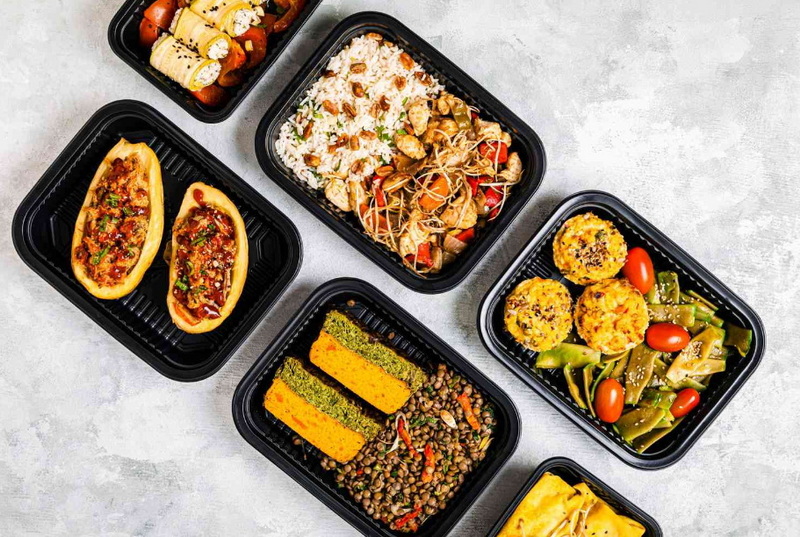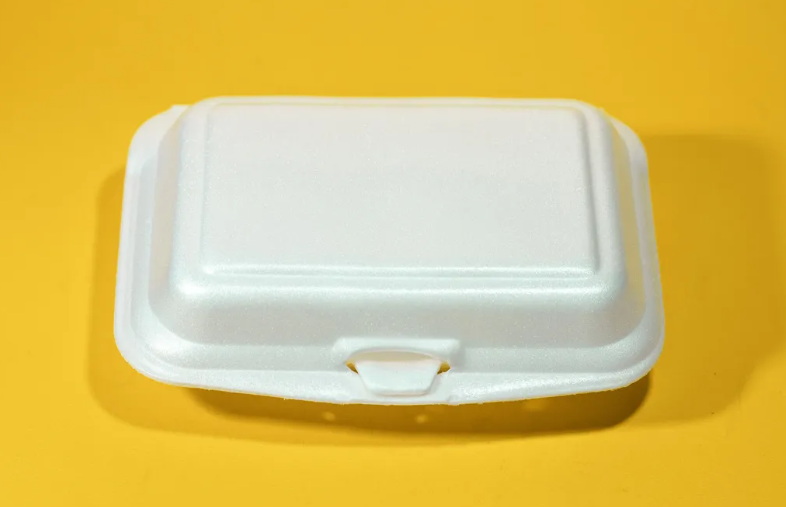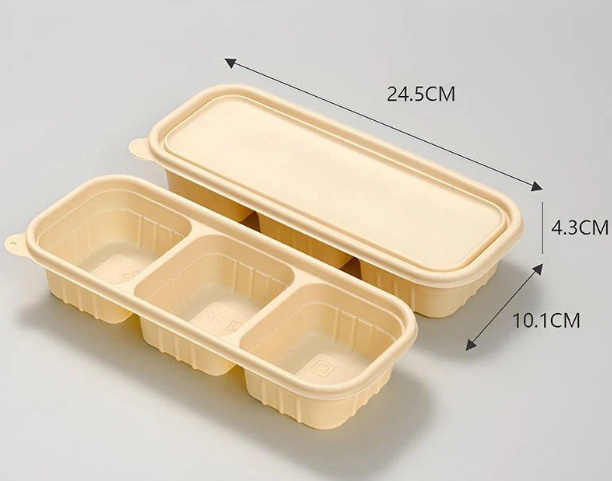
Content Menu
● Introduction to Plastic Disposable Lunch Boxes
>> Environmental Impact
● Recycling of Plastic Disposable Lunch Boxes
>> Types of Recyclable Plastics
>> Challenges in Recycling
● Reuse of Plastic Disposable Lunch Boxes
>> Creative Repurposing Ideas
>> Safety Considerations
● Alternatives to Plastic Disposable Lunch Boxes
● Promoting Sustainable Practices
>> Individual Actions
>> Systemic Changes
● Creative Repurposing Ideas for Plastic Containers
● Economic and Social Impacts
>> Economic Impacts
>> Social Impacts
● Conclusion
● FAQs
>> 1. What Types of Plastic Lunch Boxes Are Recyclable?
>> 2. Can Plastic Disposable Lunch Boxes Be Reused?
>> 3. What Are the Environmental Impacts of Disposable Plastic Lunch Boxes?
>> 4. What Alternatives Are Available to Plastic Disposable Lunch Boxes?
>> 5. How Can I Repurpose Plastic Disposable Lunch Boxes Creatively?
● Citations:
The use of plastic disposable lunch boxes has become a common practice worldwide, especially in fast-paced urban environments where convenience is paramount. However, the environmental impact of these single-use containers has raised significant concerns. In this article, we will explore whether plastic disposable lunch boxes can be recycled or reused, and discuss the implications of their widespread use.

Introduction to Plastic Disposable Lunch Boxes
Plastic disposable lunch boxes are made from various types of plastics, such as polypropylene (PP), polyethylene (PE), and polystyrene (PS). These materials are chosen for their lightweight, inexpensive, and easy-to-produce qualities. However, their environmental footprint is substantial, contributing to plastic pollution, landfill accumulation, and resource depletion.
Environmental Impact
The environmental impact of plastic disposable lunch boxes is multifaceted:
1. Resource Consumption: The production of these boxes relies on non-renewable fossil fuels, leading to energy consumption and greenhouse gas emissions.
2. Waste Generation: Most plastic disposable lunch boxes end up in landfills or oceans, contributing to pollution and harming wildlife.
3. Chemical Contamination: Some plastics contain harmful chemicals that can leach into food, posing health risks.
Recycling of Plastic Disposable Lunch Boxes
Recycling is one potential solution to mitigate the environmental impact of plastic disposable lunch boxes. However, the feasibility of recycling depends on the type of plastic used and local recycling infrastructure.
Types of Recyclable Plastics
- Polypropylene (PP): PP lunch boxes have a higher recyclable value and can be recycled if properly cleaned and collected. In Hong Kong, for instance, there are recyclers who collect, wash, and bale used PP lunch boxes for recycling[1].
- Polyethylene (PE): Some forms of PE, like HDPE, can be recycled through curbside programs.
- Polystyrene (PS): PS, often used in foam containers, is difficult to recycle due to its composition.
Challenges in Recycling
Despite the potential for recycling, several challenges exist:
1. Contamination: Food residue and other contaminants can render plastics unrecyclable.
2. Infrastructure: Not all regions have adequate facilities to process plastic waste.
3. Economic Viability: Recycling may not always be cost-effective compared to producing new plastics.
Reuse of Plastic Disposable Lunch Boxes
Reusing plastic disposable lunch boxes is another strategy to reduce waste. While not all plastic containers are safe for reuse, especially when heated, creative repurposing can extend their life cycle.
Creative Repurposing Ideas
- Gardening: Use containers as planters or seed starters.
- Storage: Convert them into storage bins for household items.
- Craft Projects: Upcycle containers into decorative items.
Safety Considerations
- Chemical Leaching: Avoid reusing plastic containers that may leach chemicals into food.
- Hygiene: Ensure containers are thoroughly cleaned before reuse.
Alternatives to Plastic Disposable Lunch Boxes
To reduce reliance on plastic disposable lunch boxes, several alternatives are gaining popularity:
1. Reusable Containers: Made from materials like stainless steel or glass, these are durable and eco-friendly.
2. Biodegradable Containers: Crafted from plant fibers or paper, these offer a more sustainable option.
3. Lending Schemes: Initiatives like MTR's reusable food container lending machine promote shared use of containers.

Promoting Sustainable Practices
Promoting sustainable practices involves both individual actions and systemic changes:
Individual Actions
- Choose Reusable Containers: Opt for reusable containers when possible.
- Participate in Recycling: Ensure that recyclable plastics are properly cleaned and placed in recycling bins.
- Support Sustainable Businesses: Encourage businesses that use eco-friendly packaging.
Systemic Changes
- Regulatory Frameworks: Governments can implement regulations to reduce single-use plastics and promote recycling infrastructure.
- Education and Awareness: Schools and communities can educate people about the environmental impacts of plastic waste and the benefits of recycling and reuse.
- Innovative Technologies: Developing technologies that improve recycling efficiency and create new uses for recycled plastics can help reduce waste.
Creative Repurposing Ideas for Plastic Containers
Repurposing plastic containers not only reduces waste but also fosters creativity and sustainability. Here are some ideas:
- Pots for Plants: Use plastic bottles as mini greenhouses for seedlings.
- Desk Organizers: Transform containers into organizers for pens, pencils, and paper clips.
- Pet Toys: Create interactive toys for pets using plastic bottles.
- Garden Lamps: Turn plastic bottles into unique garden lamps by inserting LED lights or candles.
- Art Projects: Use containers as paint palettes or create art walls by decorating and arranging them[3][6].
Economic and Social Impacts
The shift towards sustainable practices also has economic and social implications:
Economic Impacts
- Cost Increases: Implementing sustainable practices may initially increase costs for businesses and consumers.
- Job Creation: The recycling and reuse industries can create new job opportunities.
- Market Demand: As consumers become more environmentally conscious, demand for sustainable products increases, driving innovation and growth.
Social Impacts
- Community Engagement: Promoting sustainability can foster community engagement and social cohesion through shared environmental goals.
- Education and Awareness: Educational programs can raise awareness about environmental issues and encourage behavioral changes.
- Cultural Shifts: A shift towards sustainability can lead to cultural changes, valuing durability and reuse over disposability.
Conclusion
In conclusion, while plastic disposable lunch boxes can be recycled or reused under certain conditions, their environmental impact remains significant. Encouraging the use of reusable containers and biodegradable alternatives is crucial for reducing plastic waste. Additionally, improving recycling infrastructure and promoting creative repurposing can help mitigate the effects of these single-use plastics.

FAQs
1. What Types of Plastic Lunch Boxes Are Recyclable?
Some plastic lunch boxes, like those made from polypropylene (PP), can be recycled if properly cleaned and collected. However, not all types of plastic are recyclable, and local recycling facilities may vary in what they accept.
2. Can Plastic Disposable Lunch Boxes Be Reused?
While some plastic containers can be reused, it is generally not recommended due to potential chemical leaching and hygiene concerns. However, creative repurposing for non-food uses is a viable option.
3. What Are the Environmental Impacts of Disposable Plastic Lunch Boxes?
Disposable plastic lunch boxes contribute to plastic pollution, waste accumulation in landfills and oceans, and resource depletion. They also pose health risks due to chemical contamination.
4. What Alternatives Are Available to Plastic Disposable Lunch Boxes?
Alternatives include reusable containers made from stainless steel or glass, biodegradable containers from plant fibers, and shared container lending schemes.
5. How Can I Repurpose Plastic Disposable Lunch Boxes Creatively?
You can repurpose plastic containers as planters, storage bins, or decorative items. Ensure they are thoroughly cleaned before reuse to maintain hygiene.
Citations:
[1] https://www.wastereduction.gov.hk/en/schools/green_lunch.htm
[2] https://www.nbyuxiang.net/news/industry-news/the-environmental-impact-of-disposable-lunch-box.html
[3] https://bplplastic.com/en/creative-ideas-to-reuse-plastic-containers-at-home/
[4] https://recyclopedia.sg/items/plastic-takeaway-food-containers
[5] https://www.eco-harvest.com/blogs-detail/--38
[6] https://www.familyhandyman.com/article/ways-to-repurpose-takeout-containers/
[7] https://www.supplysmiths.com/blogs/news/5-creative-ways-to-reuse-your-plastic-food-packaging
[8] https://www.cubep.com/repurpose-food-containers
[9] https://elephantbox.co.uk/blogs/blog/how-to-recycle-your-plastic-lunch-box
[10] https://www.packagingbag5.com/news/the-environmental-impact-of-disposable-lunch-b-78122456.html
[11] https://www.aceretech.com/blog/marketing-event-3/disposable-lunch-boxes-from-dining-tables-to-plastic-recycling-plants-166
[12] https://sust.hkust.edu.hk/life-cycle-lab/perspectives-commentary/plastic-ban-what-now
[13] https://methodrecycling.com/world/journal/how-to-go-waste-free-with-your-office-lunch
[14] https://www.packnwood.com/blog/list-of-single-use-foodservice-containers-and-their-impact-on-the-environment/
[15] https://www.youtube.com/watch?v=JQ6bO27a3Uc
[16] https://uspackagingandwrapping.com/blog/recycling-food-containers-is-plastic-packaging-recyclable-.html
[17] https://www.epd.gov.hk/epd/sites/default/files/epd/english/environmentinhk/waste/pub_consult/files/tableware-con-doc-en.pdf
[18] https://www.youtube.com/watch?v=MH22eO9QqeQ
[19] https://connect.hkust.edu.hk/zero-plastic-takeaway-container-pilot-program
[20] https://myneemoe.in/blogs/news/what-is-the-impact-of-reusable-lunch-containers-on-reducing-environmental-waste

















